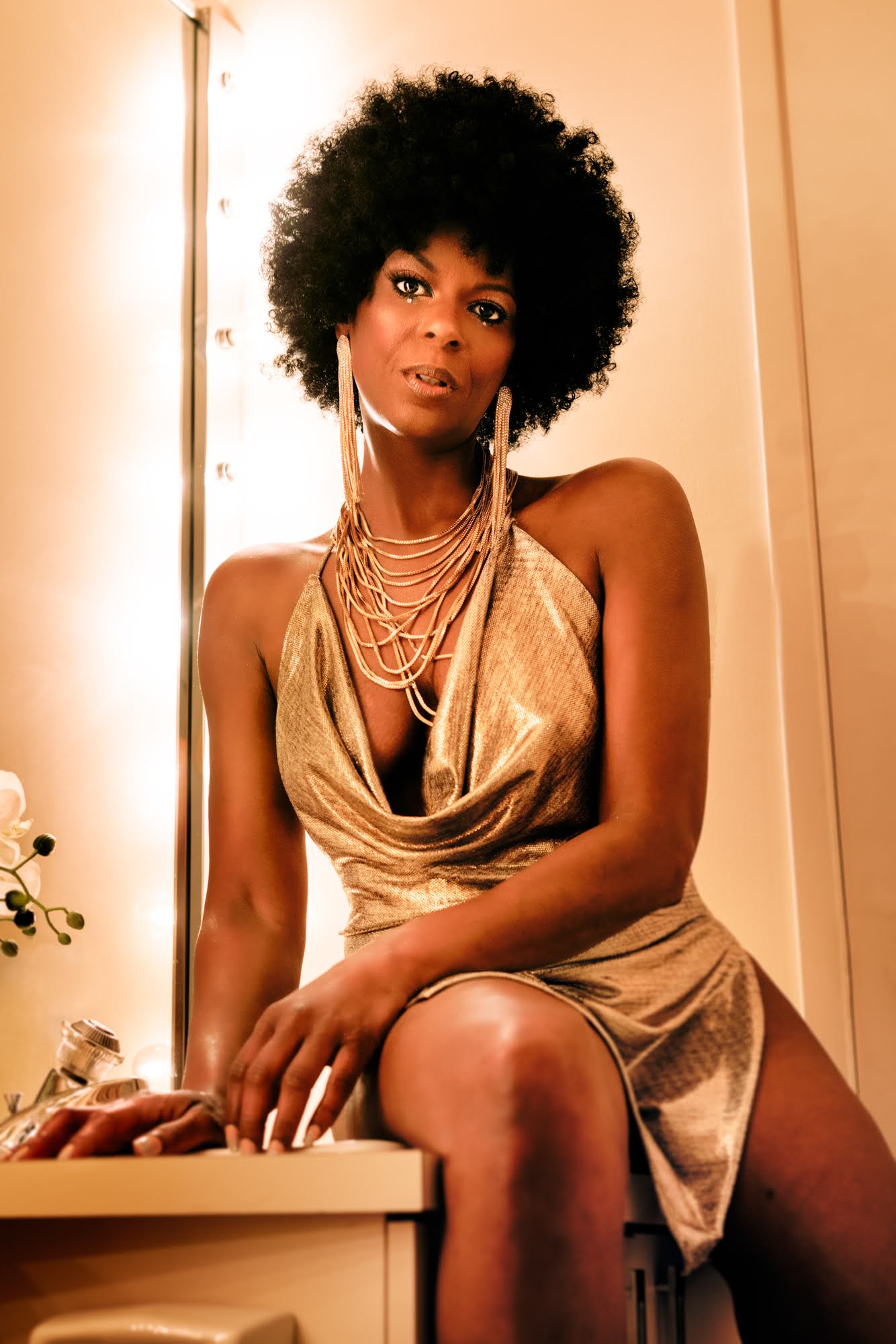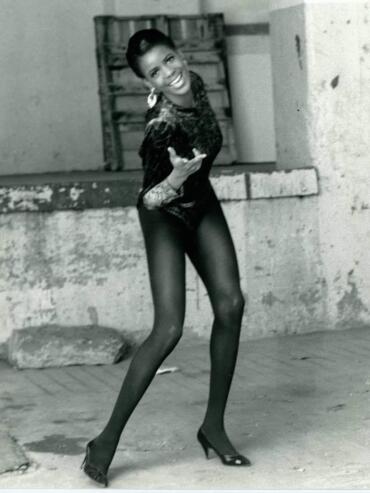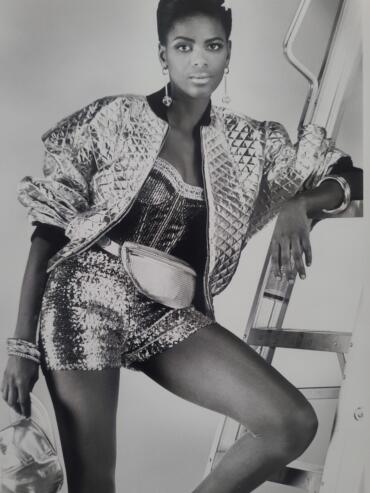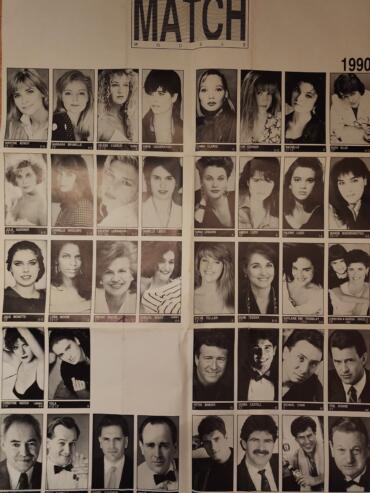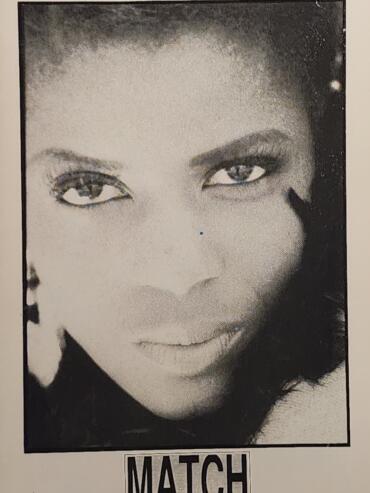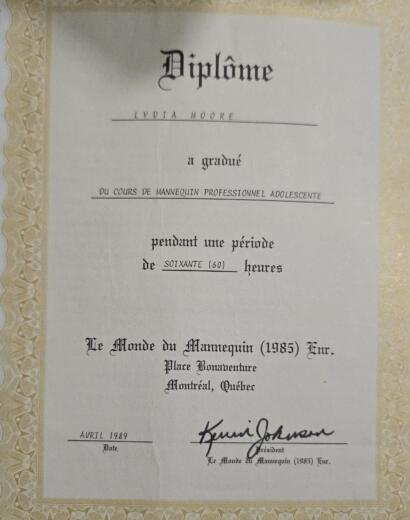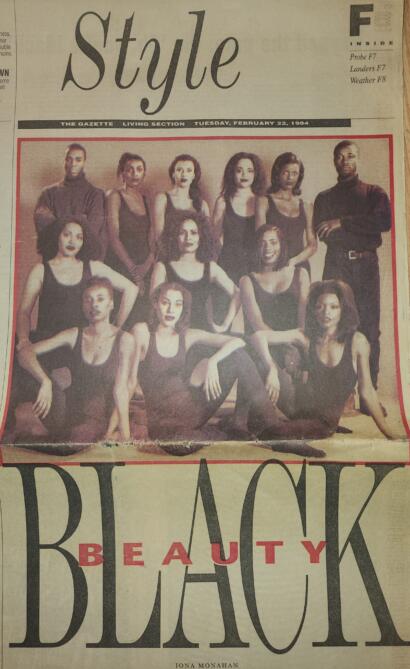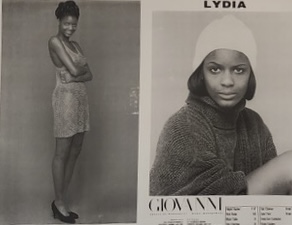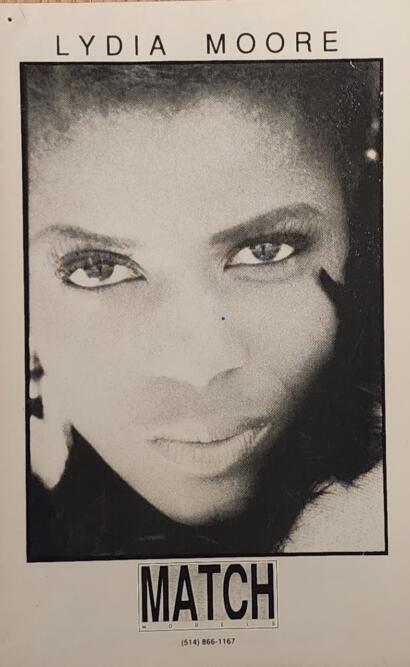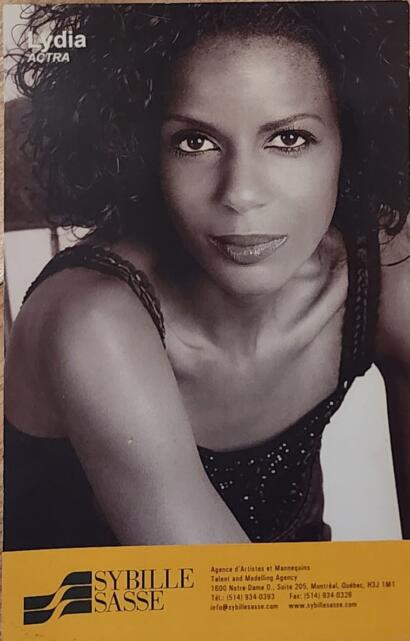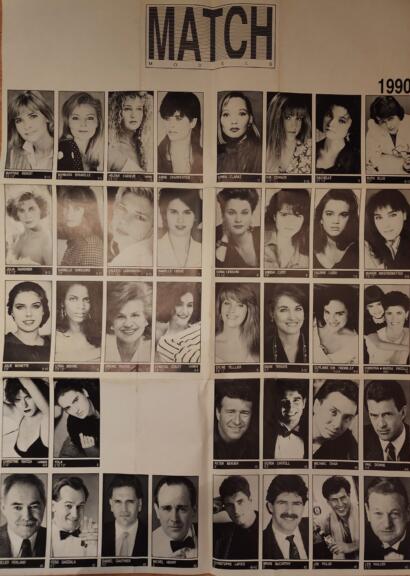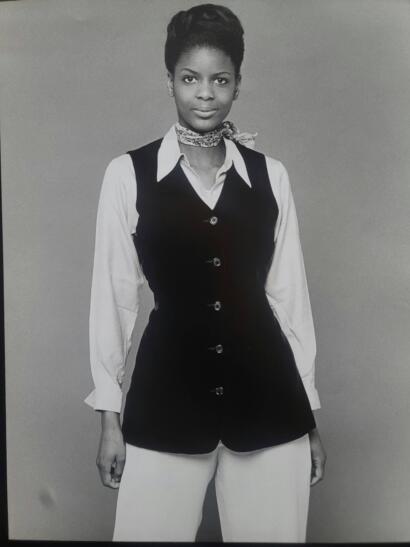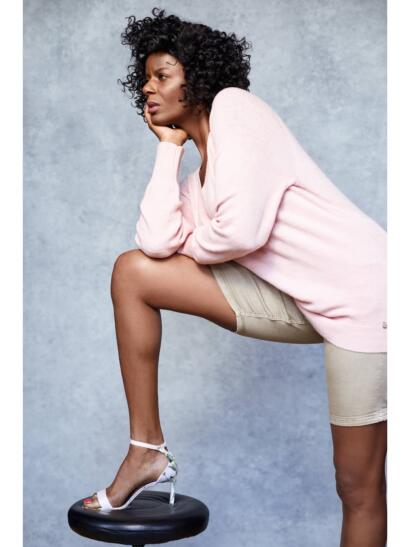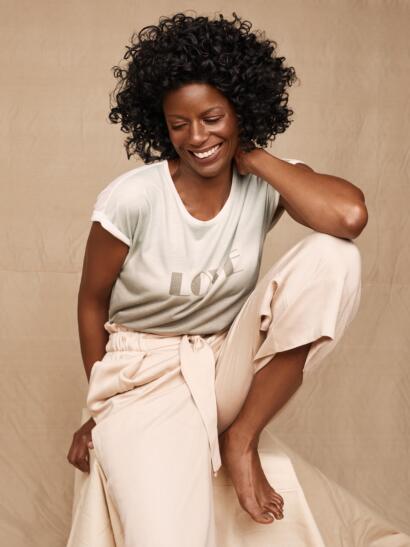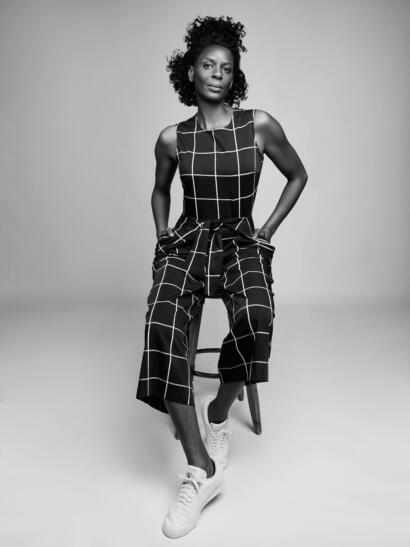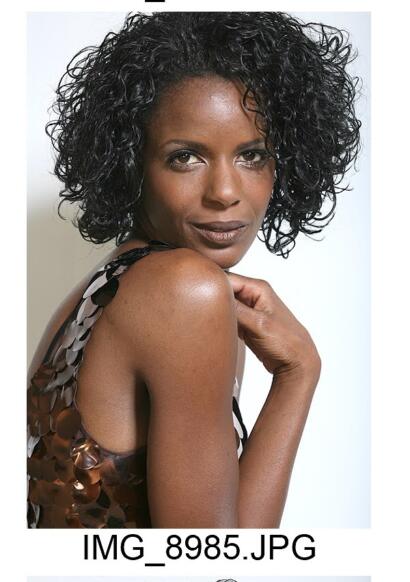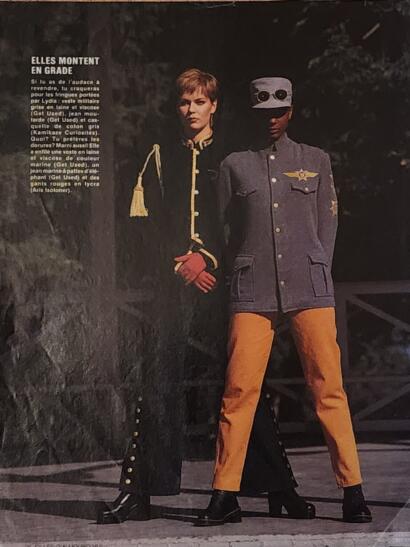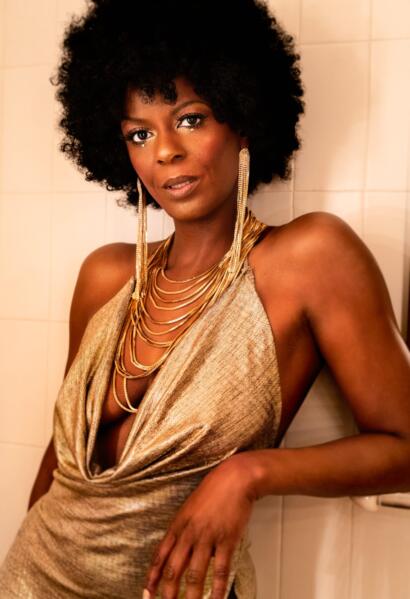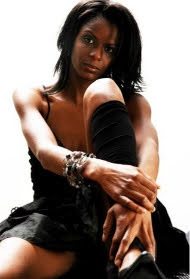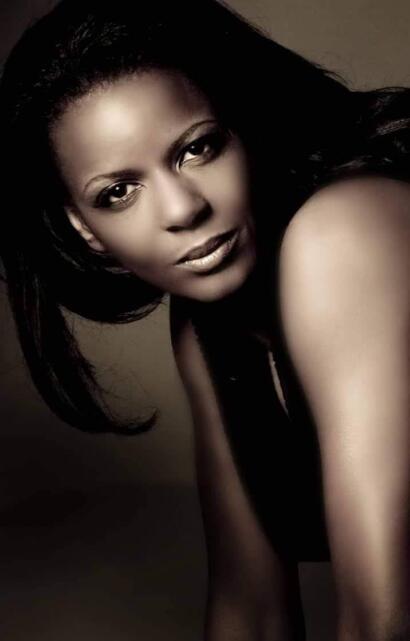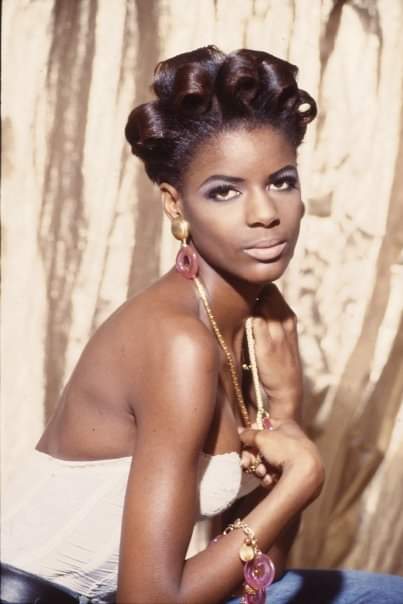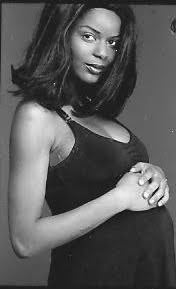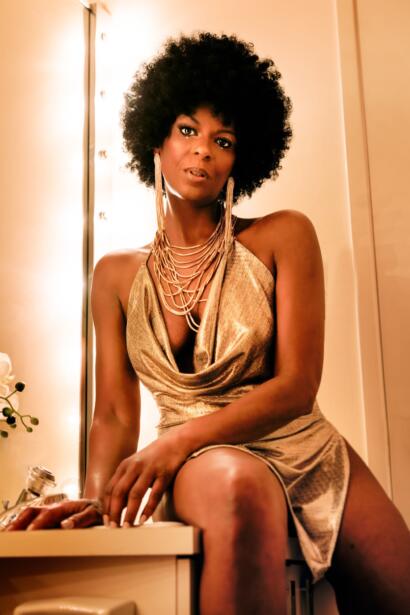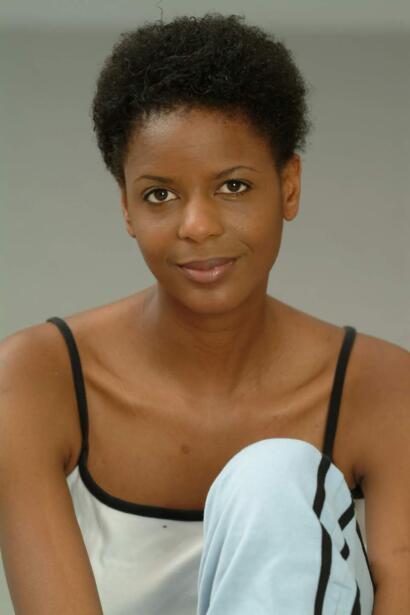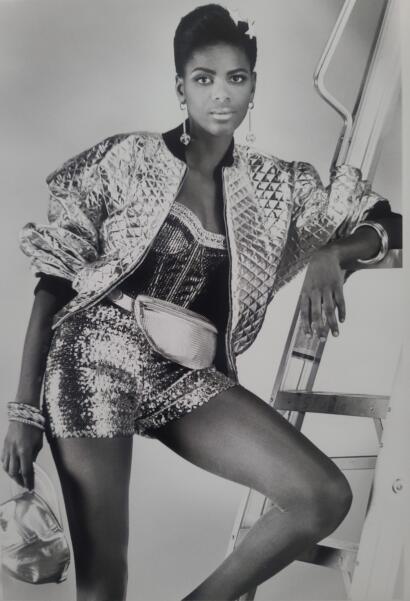June 2024
Month 20xx
Words by Gwynneth Tansey and Alexa Valente
Charmaine Gooden
Jacob Marion
Lydia Moore, a notable figure in Montreal, has made her mark across various industries, including a substantial contribution to Canadian fashion. Moore got into modelling by coincidence, and despite never expecting her level of success, grew the opportunities given to her into a flourishing career. Brands loved her strong runway walk, down-to-earth personality and ability to fit into almost anything. Standing at 5 feet 10 inches, Moore was a versatile fit model, making anything from a size two to 12 look good.
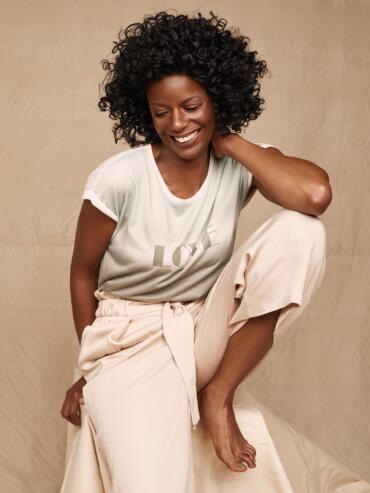
EARLY LIFE AND CAREER
Moore was born, and still resides, in LaSalle, Montreal to Barbadian parents Joyce and Clifford Moore. She was raised in the city her whole childhood, along with her two older brothers, Derrick and Martin. Attending LaSalle High School (Protestant), Moore was an all-around athlete, very engaged in sports and always imagined she would become a professional track and field star.
It was only once Moore was introduced to the fashion industry that sports began to take a back seat. In 1987, her cousin was doing an eight-week modelling course at Match Models and asked Moore to accompany her. The course taught them how to walk, apply makeup, do their nails, and pose for the camera.
Kevin Johnson, the owner of Match Models who organized the course, saw potential in her. Once she graduated high school, he could get her bookings immediately. As Moore describes, he seemed to think, “Oh, she already has a little bit of a walk. I just have to polish it up.” She was working as a model by the next week.
One of Moore’s first agents was Marie Josée Trempe, the founding president at SPECS Model Management. Trempe started her agency with more than half her models being Black, which was almost unheard of at the time. Moore was one of the first models that SPECS signed. Trempe remembers her fondly as “A really young, young thing at the time. I thought she was beautiful. I loved her personality, she was a go-getter, she was elegant,” adding “She’s always been someone that I believed in from the start.”
Eventually, she branched off into fit modelling, working three to four times a week as a model for manufacturers to fit clothing to her. Rates were high, and for a time, it was her full-time job.
This special section creates a photo next to a pull-quote
Moore began her career primarily with commercial and high fashion runway modelling. Some days, she would model in print catalogues for nationwide brands like Zellers, and on others, she would walk fashion shows for Quebec-based designers, like Nadya Toto, Denis Gagnon, Jean Airoldi, Jean Claude Poitras and Marie Saint Pierre. She describes it as two completely different worlds. Eventually, she branched off into fit modelling, working three to four times a week as a model for manufacturers to tailor clothing on. Rates were high, and for a time, it was her full-time job.
Though she wasn’t seen very often in the spotlight, she enjoyed working in the background. There would typically be many models in Montreal all fighting for one job. Moore took herself out of that equation because she was making a decent salary with her work as a fit model. For her, it was always more about the business than being a star. Further into her career, Moore also did maternity modelling and continues to work as a mature model, dipping her toes into many different areas of the industry.
Following her successful modelling career, Moore expanded into other ventures, as a modelling coach, actor, high-end Caribbean restaurant owner (Mango Bay), property manager, pet boutique owner (Urban Pet) and event producer. “I always incorporated the fashion industry with everything I did,” she recalls with a laugh. “Be it fashion shows at my Caribbean restaurant, or a ‘barking brunch’ Halloween doggy fashion show at my pet boutique.”
ROLE OF RACE
During the late 1980s and early 1990s in Montreal, diversity in the fashion industry was very rare. Moore explains, “There were not a lot of Black models working at that time, it was like one Black model if you were lucky.”
It was most common to hire Black models who were mixed race, usually a lighter skin tone so that they would blend in more with everyone else. Moore recalls that “They didn’t know how to light us,” and if one model had darker skin than the others, that model would end up with their skin tone looking too cool, warm, or white-washed.
Black models like Moore had a difficult time in the industry. She remembers how they would spend “So much time trying to figure out what to do with our hair to be able to conform to what they thought was beautiful.” She recalls how the racism would often be veiled, a silent type of racism. Moore experienced microaggressions throughout her career, being told things like, “Oh, you don’t have a nose like a Black person.”
There were times that Moore would be on set with 50 people, and she would be shocked to realize that she was the only Black person there. In those moments, she describes the feeling as “Just so grateful to be there.” There were often discriminatory experiences that she couldn’t speak out about because she was afraid it might affect how many jobs she was booked for.
To this day, Moore still brings her makeup, wigs, and products to shoots just in case. She admits it has gotten a lot better now that makeup artists and hairdressers are required to take classes to understand different hair and skin types. “In the last couple of years, that’s something that’s been implemented in the community to make it better for us. We had a tough time,” she says.
INFLUENCE AND LEGACY
Moore has always looked at modelling as a business. Through this lens, she has encouraged many young people into modelling over the years, even coaching quite a few for runway shows and pageants.
One of the agencies that Moore would coach models for was her past agency, SPECS. Trempe recalls that at the time, “We would hire Moore to train the models for runway or even just posing.”
Moore has had a considerable influence on the lives of many people in the industry. She explains, “I often get comments from people who know me from back in the day, and they always say that I had a big impact on them.” She was always careful in selecting who she would coach and wouldn’t make any promises to them, doing her best to ensure they would make back any money they invested in getting started. Throughout her career, she describes wanting to leave a strong legacy behind, “I was always trying to help people move ahead as best as I could.”
Moore has excelled at modelling due to her strength, personality and talent. The mark she has left on Montreal’s fashion scene goes beyond the runway and explores the larger story of what it means to be a Black woman in fashion. When Moore began modelling, there was a clear lack of diversity, and her ability to face the challenges presented and emerge with poise and strength is a testament to her character. With an entrepreneurial spirit and positive attitude, Moore’s time in the industry has helped to create opportunities for all the Black models who came after her.


